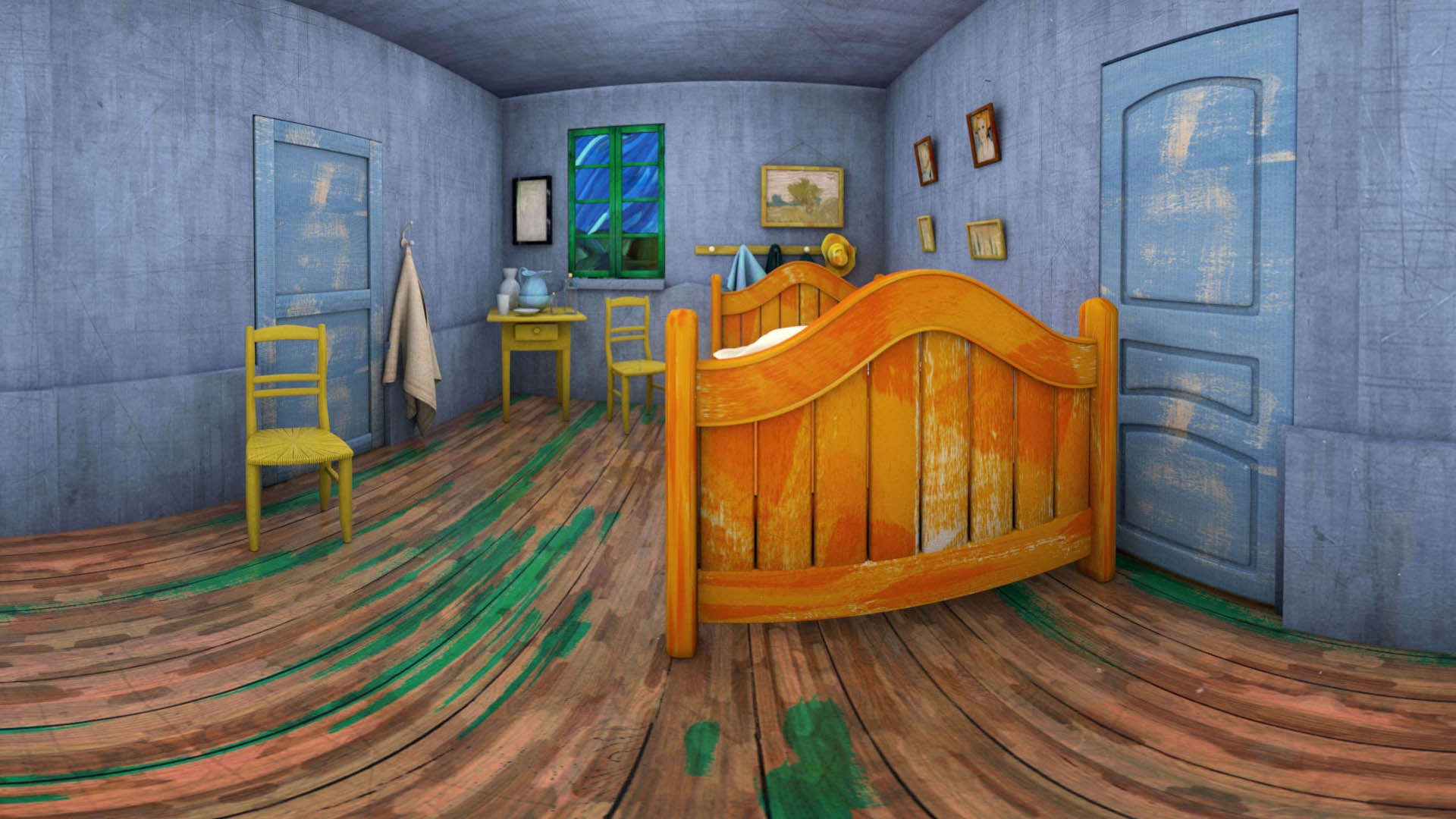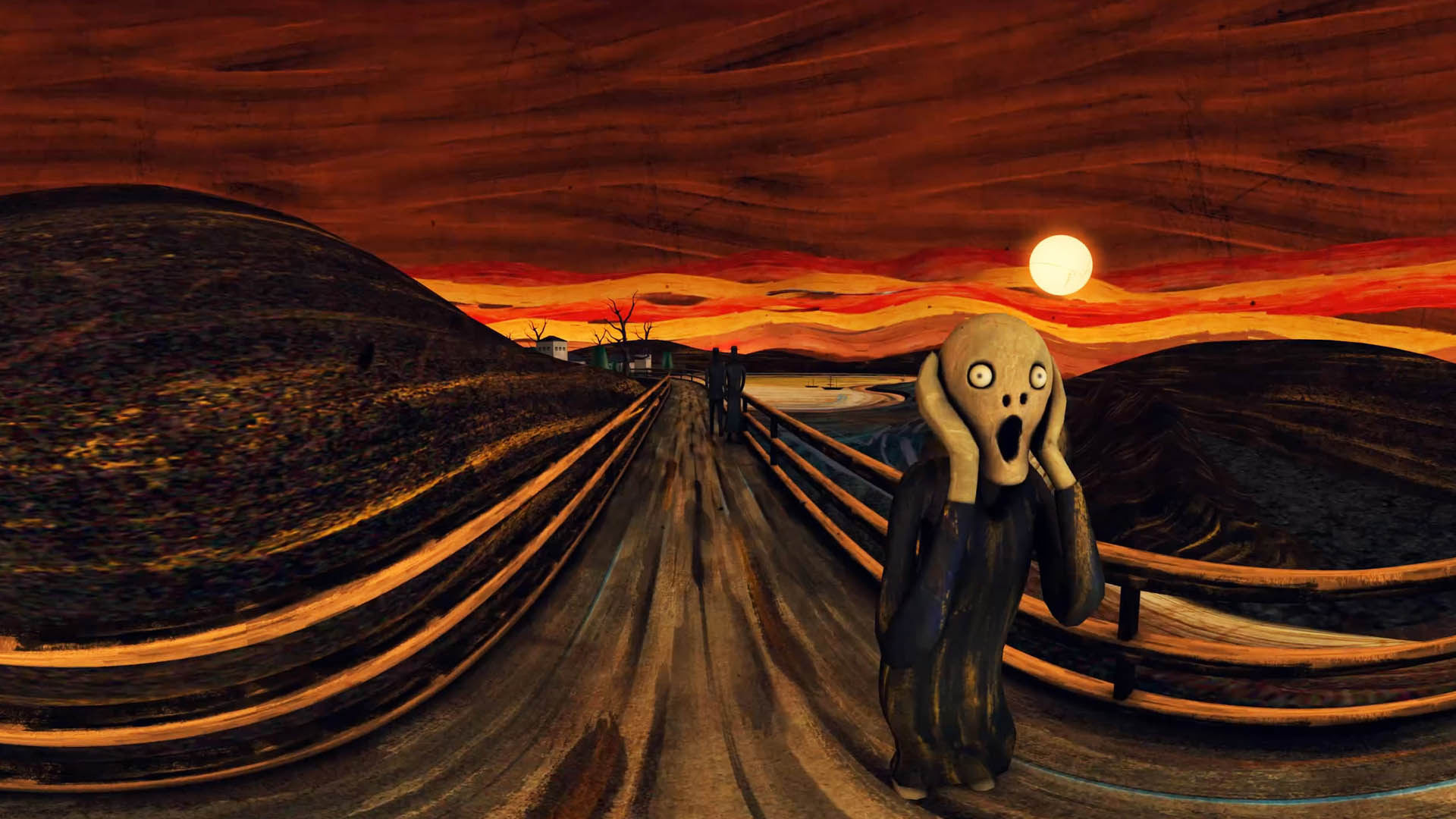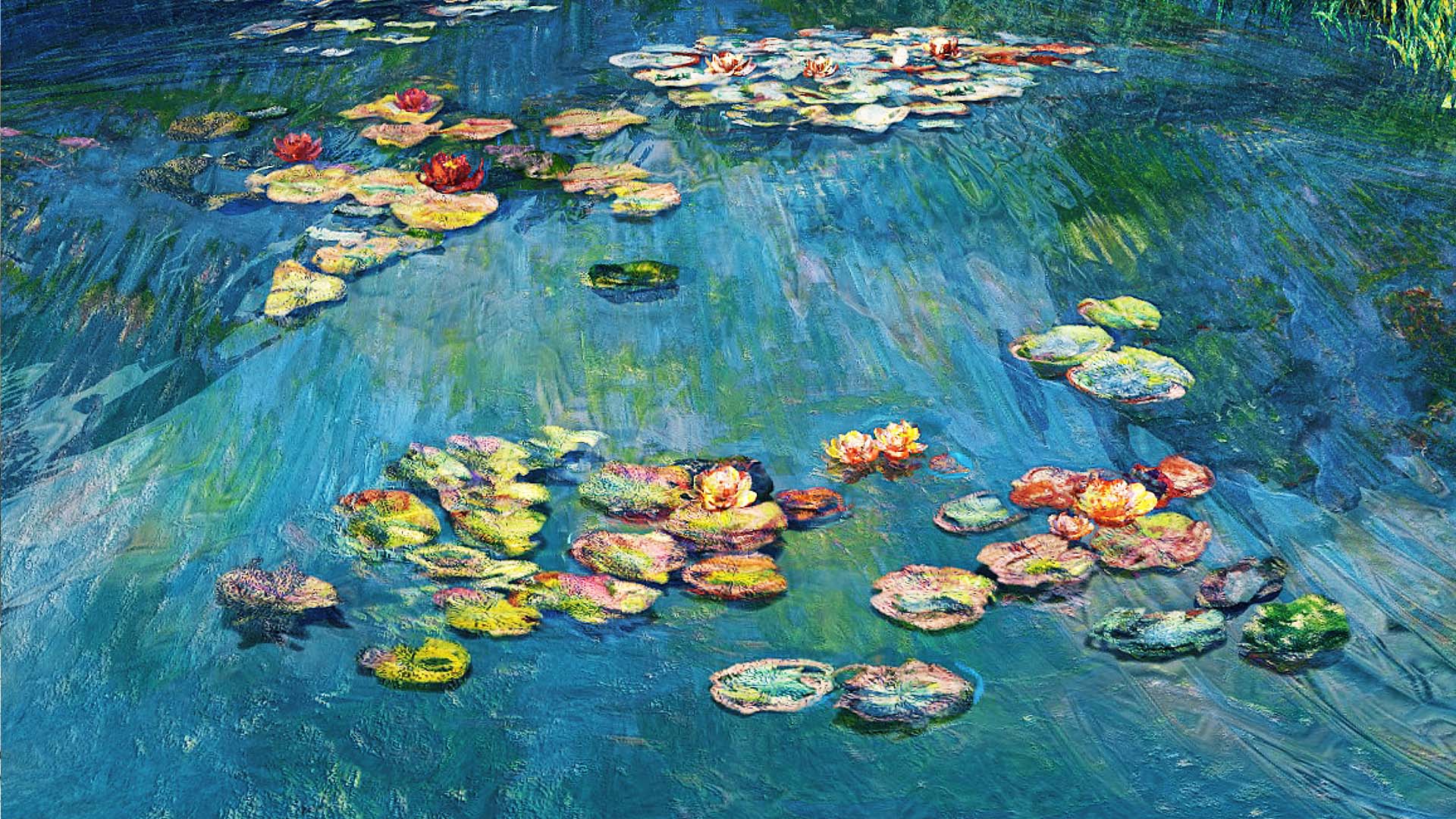The concept behind A Room Where Art Conceals is an enticing one; a unique VR experience that promises to immerse you in art history. While this inspired idea holds seemingly boundless potential for allowing us entirely new ways to explore and appreciate art, it’s let down by messy presentation, awkward audio commentary and a lack of content that results in a poorly executed and thoroughly disappointing experience.
Framing this journey is a needlessly tacked on narrative in which a catastrophic “disarster” has left mankind devoid of emotions. You are tasked with venturing into the works of Van Gogh, Munch and Monet to retrieve and restore these emotions in the hope of saving the human race. The opening cinematic that introduces this exposition plays out like a surreal meditation tape as a rather uncertain sounding British robot explains emotions to you over a montage of shimmering lights and abstract imagery. A poorly localised script, translated from the developer’s native Chinese, does no favours for the robot’s voice actor who despite clearly being a native English speaker, consistently stumbles over awkward phrasing and stilted quips.

This strange sequence gave the first warning signs that what I was about to experience was greatly removed from my hopeful expectations. Finding myself in a stone courtyard, I was presented with three doors, each corresponding to a different artist. I headed first into the Van Gogh room where I found his famous painting “The Starry Night” sat unfinished on a pool table. Picking up and placing a nearby corner section the piece became complete, allowing me to be transported into the painting itself.
Two-dimensions blurred and became three-dimensional as I suddenly found myself aboard a hot air balloon, descending towards the town below. With the spiralling, swirling sky dancing above me, I felt for a moment the magic I had anticipated. Seeing Van Gogh’s distinct mark making given motion truly brought the image to life, presenting it to me in a new and novel way. Yet as I reached the ground the illusion dispelled. The magical became mundane as the town’s barren street and blocky buildings met me with their muted tones and muddy textures. As I floated through the “Bedroom in Arles” a little of my curiosity returned but as suddenly as it had started, the sequence was over.

Returning to Van Gogh’s room I moved point-to-point, performing simple tasks which unveiled two more paintings “Wheatfield with Crows” and “Sunflowers”. However, stepping into these initiated the very same Starry Night sequence, albeit now featuring elements like crows and sunflowers and a new colour palette to match. Although arguably the best of the three, the Van Gogh experience still suffers from blurry visuals and ugly textures that while capturing the general feel of the original piece, lack the detail and nuance of the artist’s signature style.
Each of A Room Where Art Conceals artist themed rooms boils down to the same uninteresting formula as rudimentary puzzles lead into three slightly different versions of the same on-rails 3D video sequence. The initial sensation of excitement I felt as each painting transformed from 2D to 3D swiftly faded as I was met with the same disappointing realisation that what lay behind this facade was best left unseen. That’s not to say some worthwhile views don’t exist within these sequences — The Starry Night’s alternative colour palettes do provide interesting, refreshing twists on the piece — but many of the ways these artist’s works are interpreted and adapted for a 3D VR experience seem poorly judged and out of place.

While additional rooms themed around artists like Picasso and Klimt are teased for future release, the three short experiences that A Room Where Art Conceals currently contains offer less than an hour worth of content. A gallery mode does seek to add some longevity to the experience, yet the commentary’s clumsy writing, wooden delivery and uninspired trivia offer minimal insight and thus no real reason to revisit any of these works.
A Room Where Art Conceals is an excellent idea executed poorly. Behind it seems a genuine love of art but this rarely manifests in practice, resulting in a short, shallow and sloppy experience that does little to honour or enhance the works it seeks to pay homage to.
A Room Where Art Conceals
-
Overall - Bad - 4/104/10
Summary

A Room Where Art Conceals disappoints. The exciting prospect of exploring art history in VR remains unfulfilled, instead offering a short and sloppy experience that suffers from muddy visuals, awkward narration and a distinct lack of content.
Review Disclaimer: This review was carried out using a copy of the game provided by the publisher. For more information, please read our Review Policy.
Reviewed using PS4 Pro.















